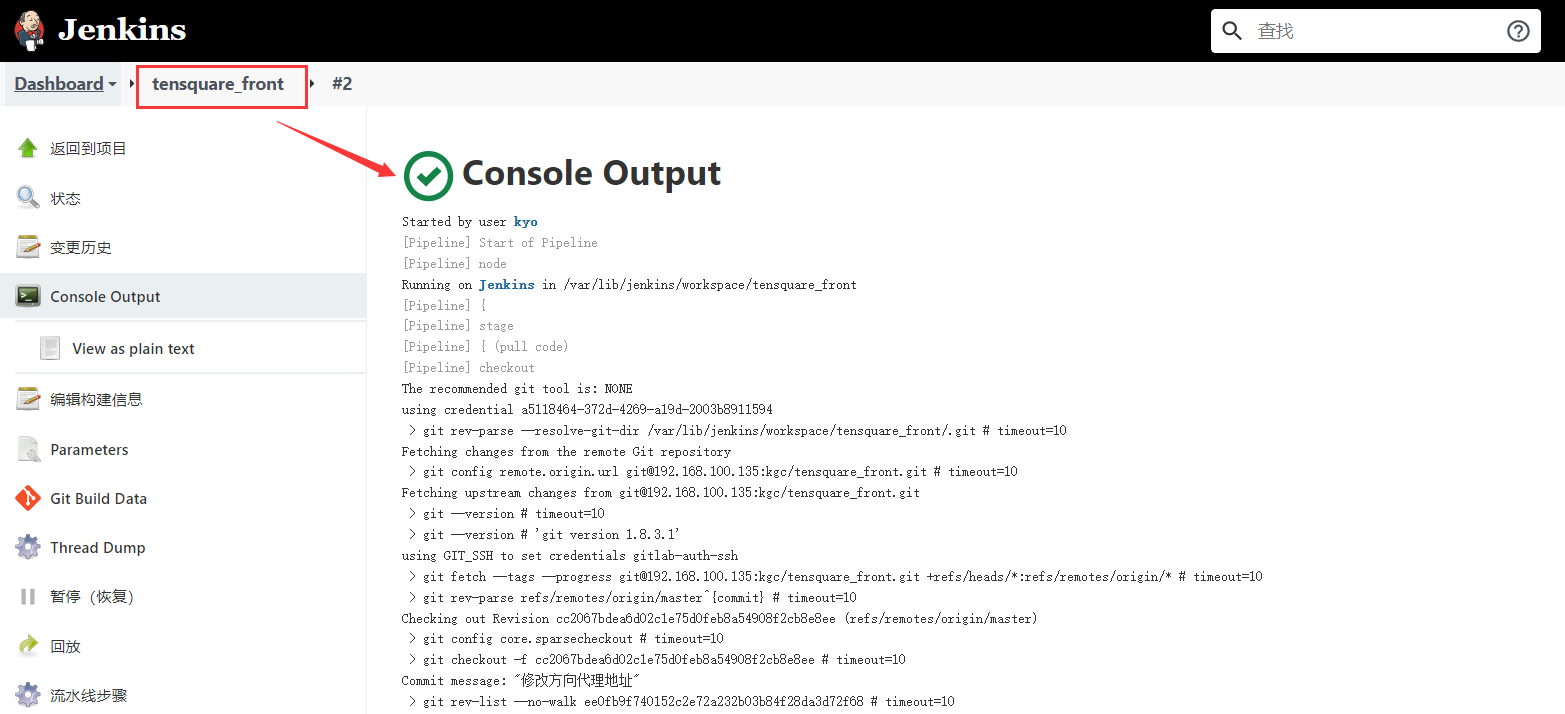catalogue
1.Jenkins+Docker+SpringCloud deployment scheme optimization
2. Design the construction parameters of Jenkins cluster project
3. Multi server remote publishing of microservices
4.Nginx+Zuul cluster realizes high availability gateway
1.Jenkins+Docker+SpringCloud deployment scheme optimization
Problems in the above deployment scheme:
① Only one microservice deployment can be selected at a time
② Only one producer deployment server
③ There is only one instance of each microservice, and the fault tolerance rate is low
Optimization scheme:
① In a Jenkins project, you can select multiple microservices to publish at the same time
② In a Jenkins project, multiple production servers can be selected and deployed at the same time
③ Each microservice is deployed in the form of cluster high availability
Jenkins+Docker+SpringCloud cluster deployment process description
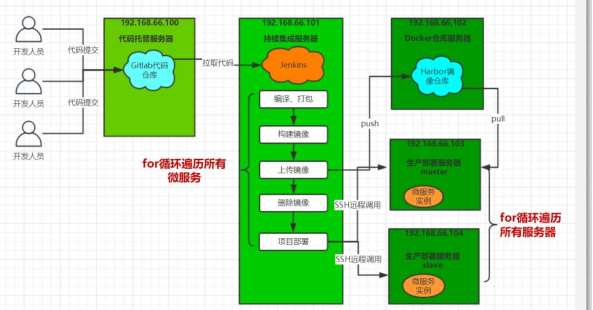
To configure two production servers as clusters, you need to configure the docker environment
In the eureka configuration, modify the version to the cluster version
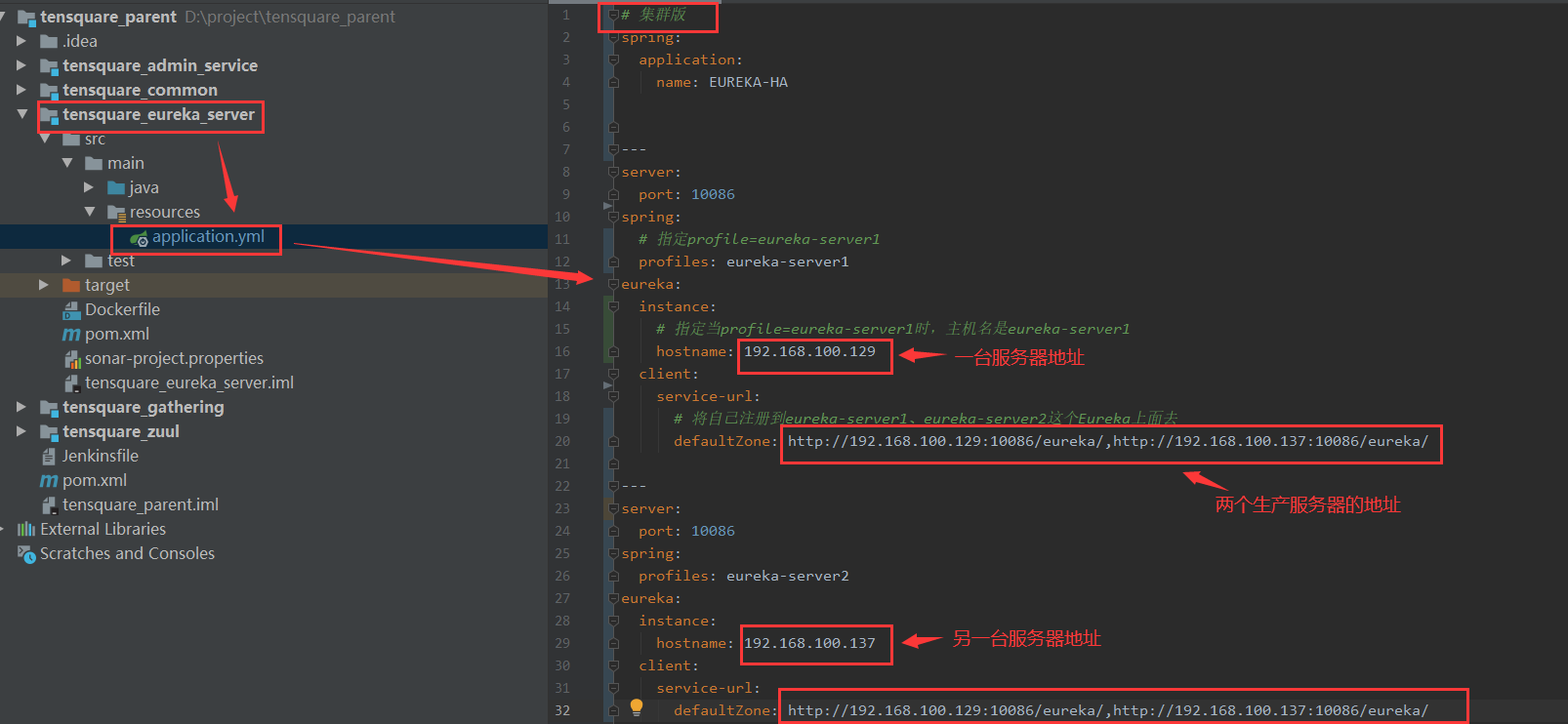
# Cluster version
spring:
application:
name: EUREKA-HA
---
server:
port: 10086
spring:
# Specify profile = Eureka Server1
profiles: eureka-server1
eureka:
instance:
# Specifies that when profile = Eureka Server1, the host name is Eureka Server1
hostname: 192.168.100.129
client:
service-url:
# Register yourself on eureka-server1 and eureka-server2
defaultZone: http://192.168.100.129:10086/eureka/,http://192.168.100.137:10086/eureka/
---
server:
port: 10086
spring:
profiles: eureka-server2
eureka:
instance:
hostname: 192.168.100.137
client:
service-url:
defaultZone: http://192.168.100.129:10086/eureka/,http://192.168.100.137:10086/eureka/zuul gateway service configuration cluster address

admin_ Configure cluster address for service authentication center

Active microservice configuration cluster address

After all modifications are completed, submit the code to Gitlab
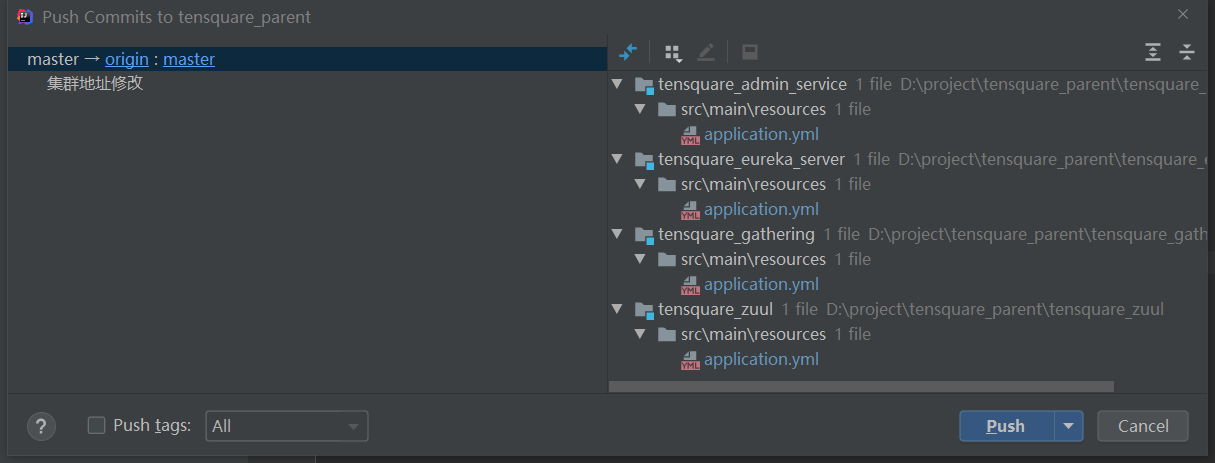
2. Design the construction parameters of Jenkins cluster project
Installing the Extended Choice Parameter plug-in supports multiple selection boxes

Create pipeline project
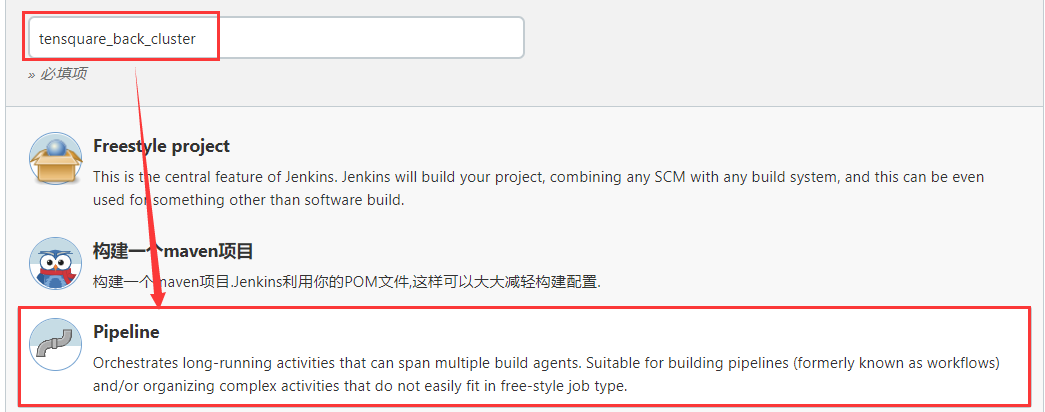
Project settings created in
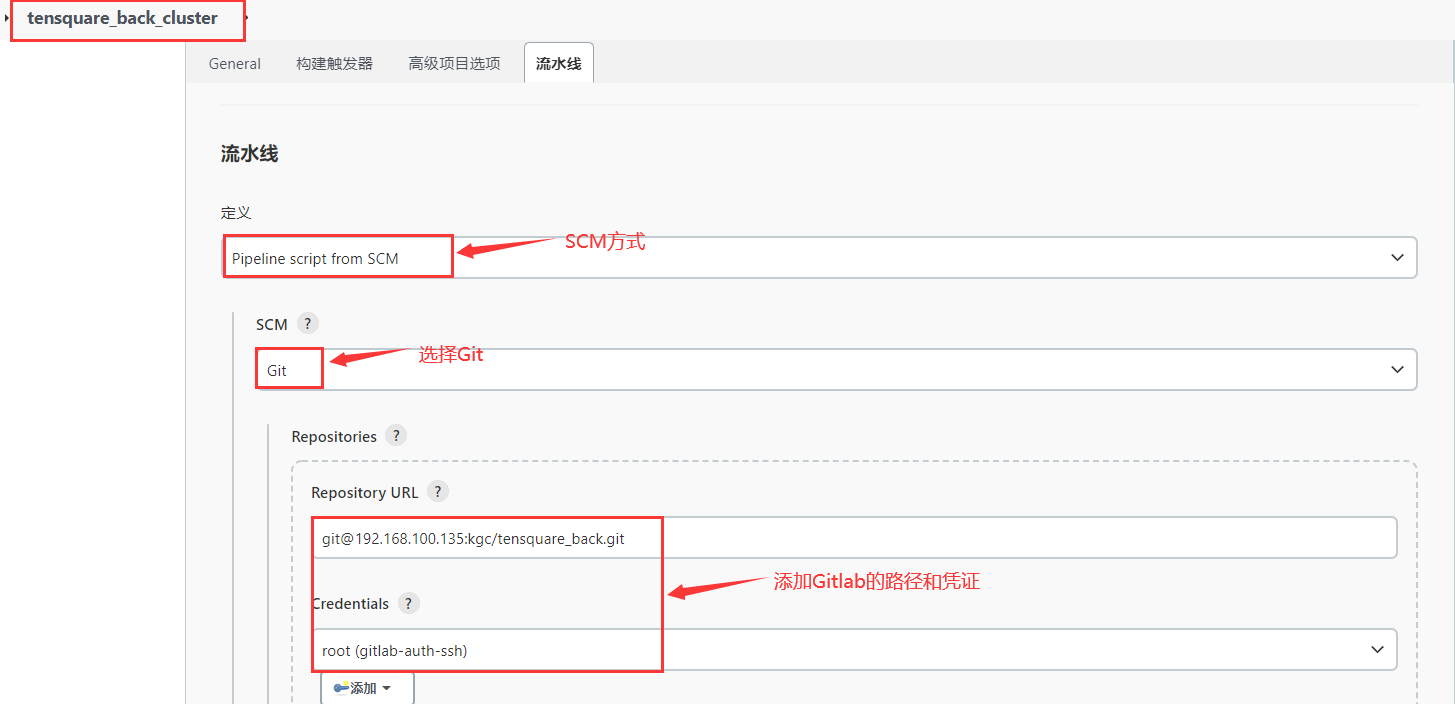
Add string parameter: branch name
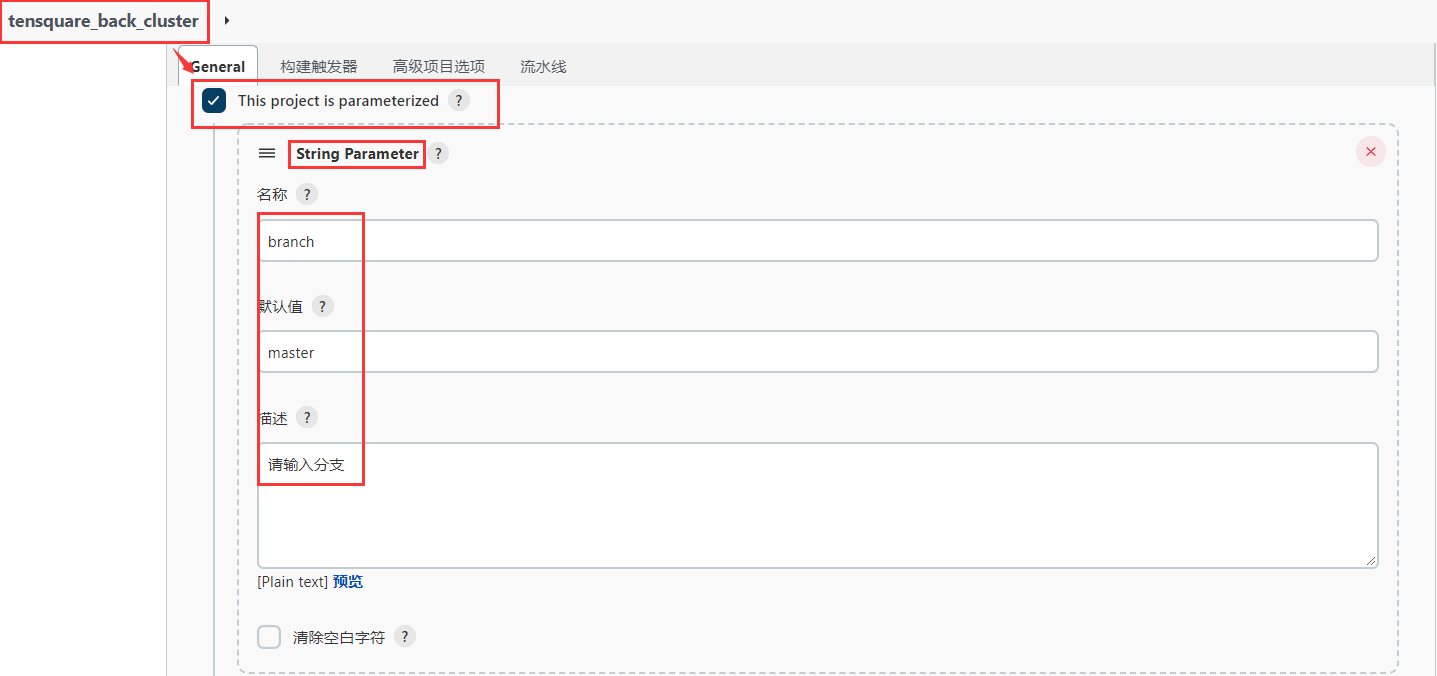
Continue to click Add parameter to find the Extended Choice Parameter
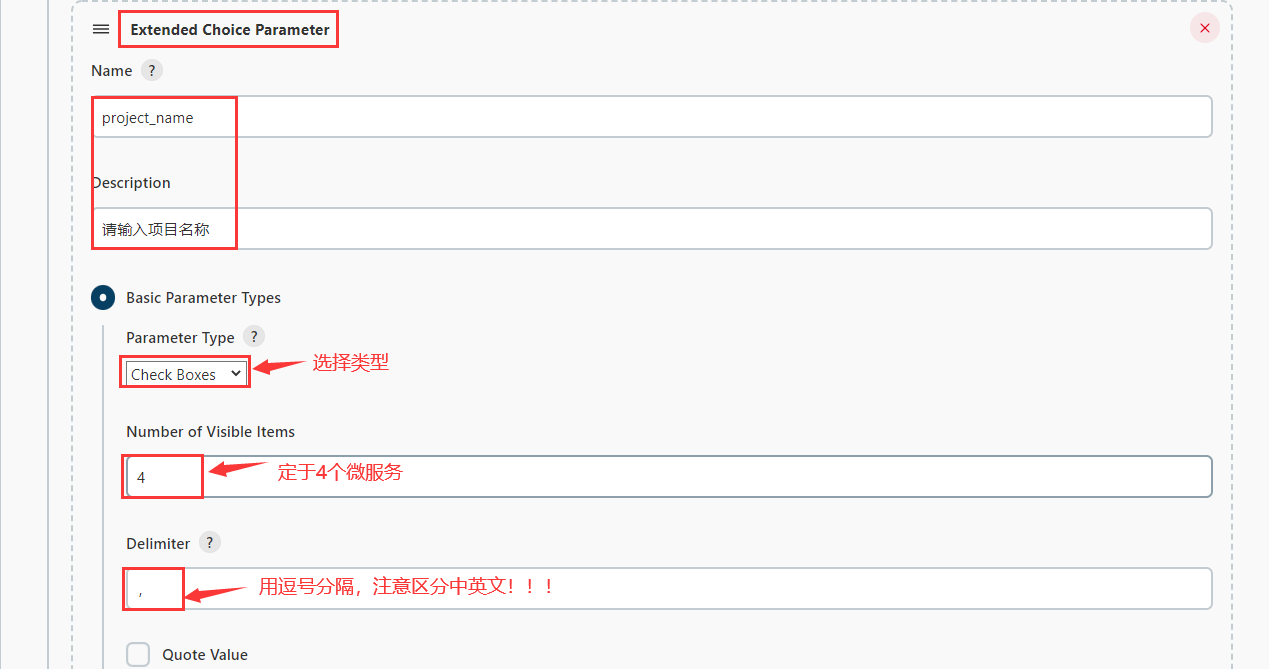



After all settings are completed, return to the build interface
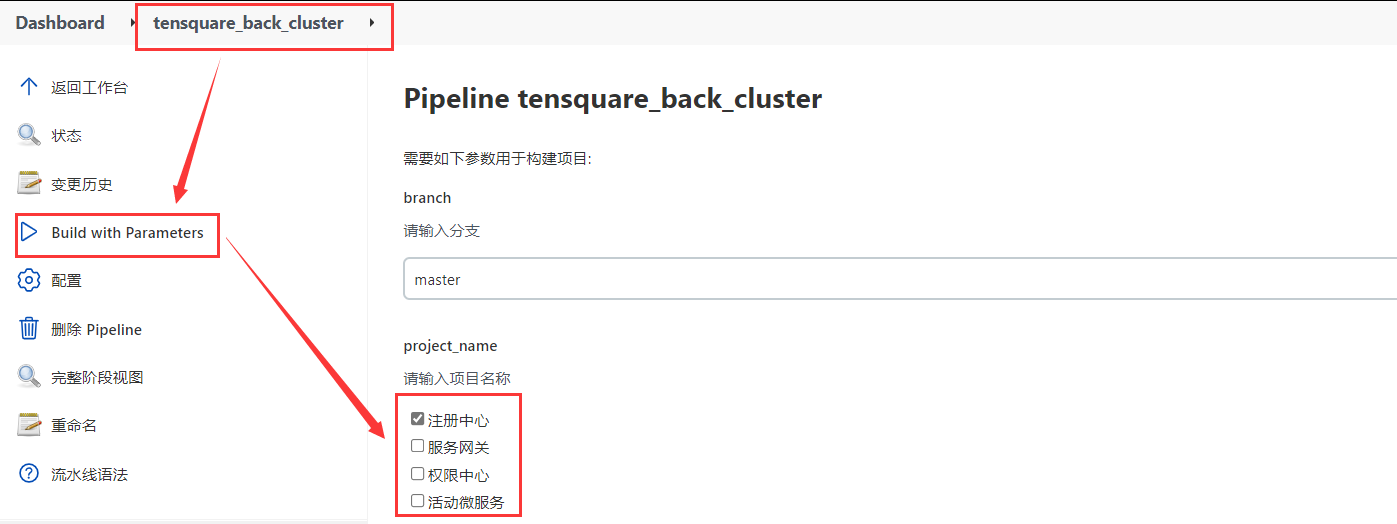
Loop code check
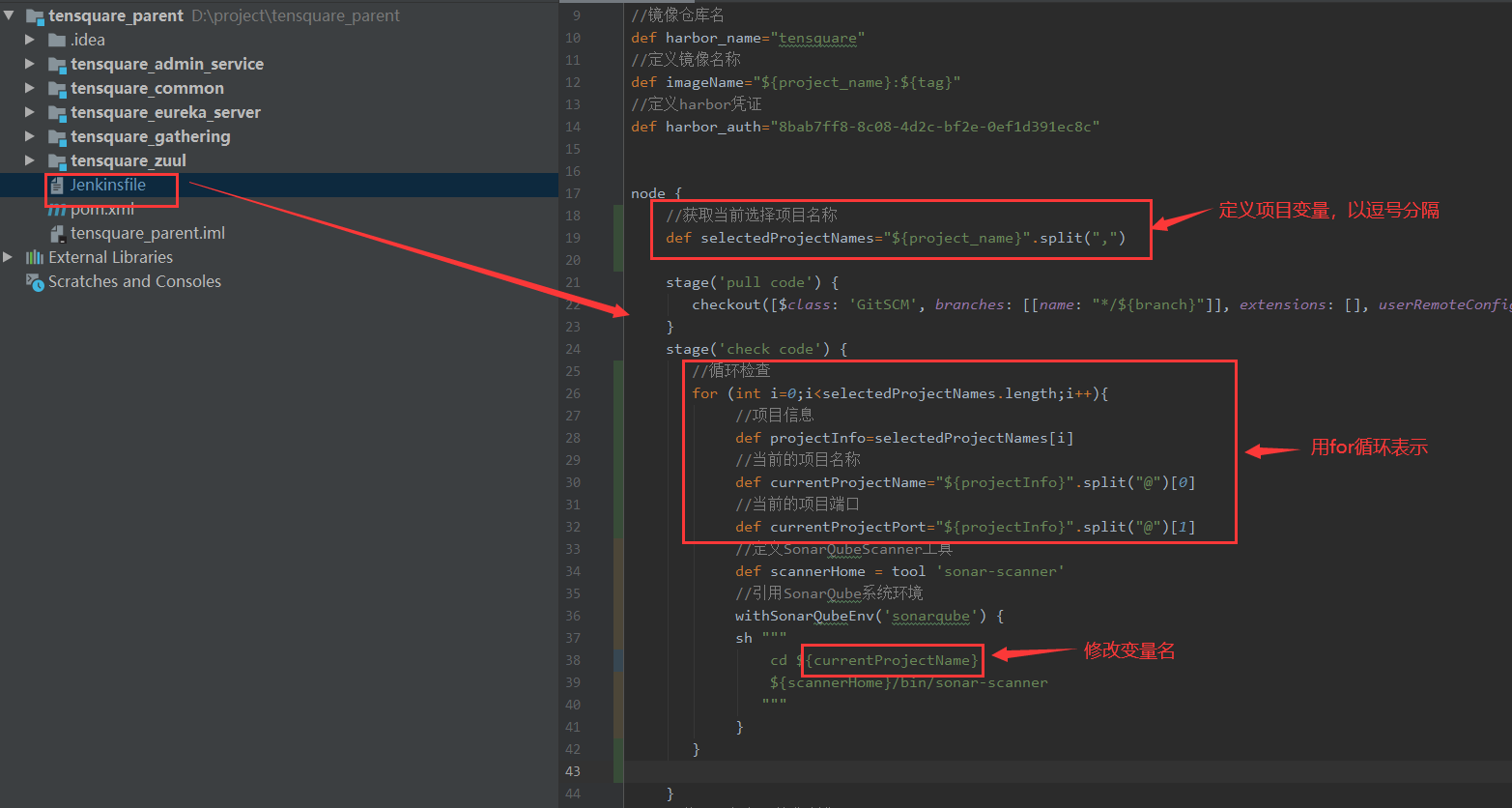
//Gets the name of the currently selected item
def selectedProjectNames="${project_name}".split(",")
stage('check code') {
//Cycle check
for(int i=0;i<selectedProjectNames.length;i++){
//Project information tensquare_eureka_server@10086
def projectInfo=selectedProjectNames[i]
//Current project name
def currentProjectName="${projectInfo}".split("@")[0]
//Current project port
def currentProjectPort="${projectInfo}".split("@")[1]
//Define the SonarQubeScanner tool
def scannerHome = tool 'sonar-scanner'
//Reference SonarQube system environment
withSonarQubeEnv('sonarqube') {
sh """
cd ${currentProjectName}
${scannerHome}/bin/sonar-scanner
"""
}
}
}Circular packaging compilation and image making
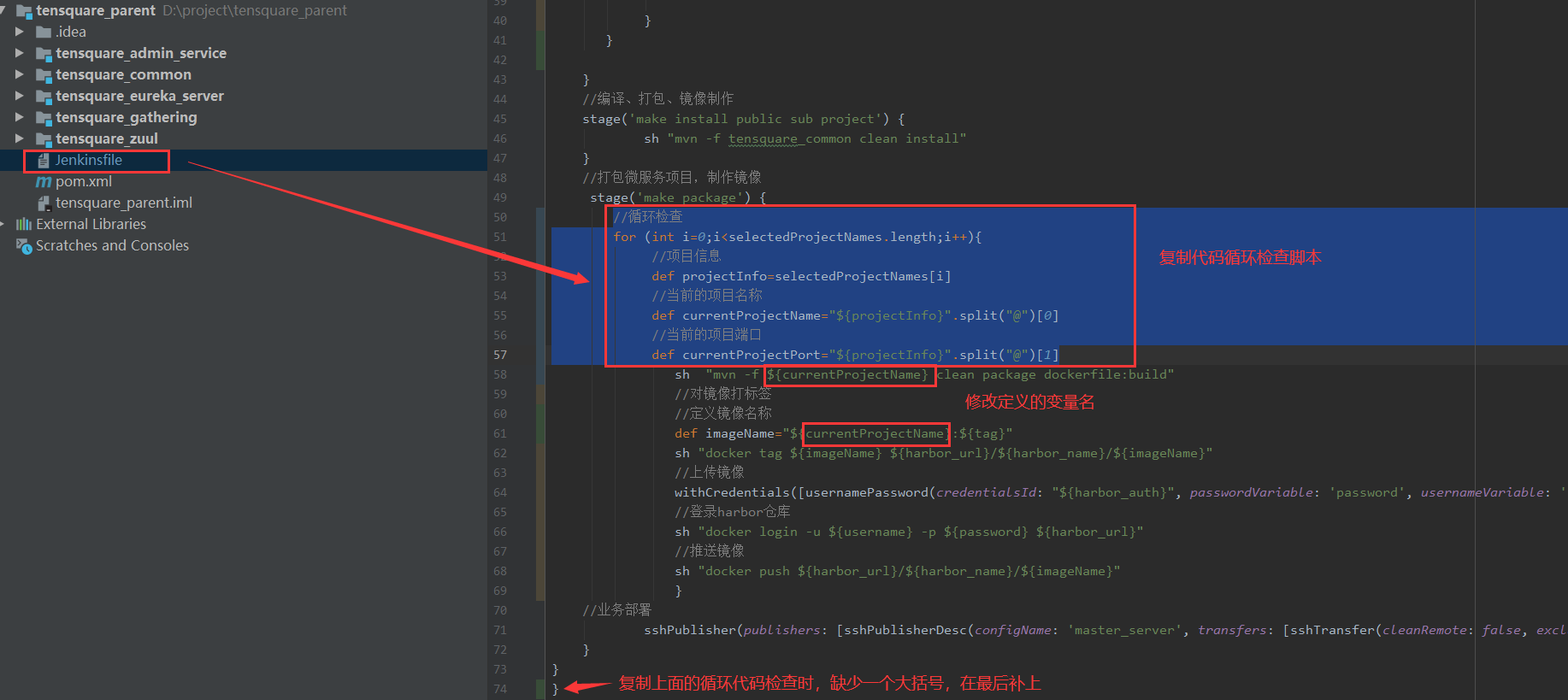
for (int i=0;i<selectedProjectNames.length;i++){
//Project name tensquare_eureka_server@10086
def projectInfo=selectedProjectNames[i]
//Current project name
def currentProjectName=projectInfo.split("@")[0]
//Current port
def currentProjectPort=projectInfo.split("@")[1]
sh "mvn -f ${currentProjectName} clean package dockerfile:build"3. Multi server remote publishing of microservices
Configure remote deployment server
Copy the public key from Jenkins server to the second production server (docker environment has been configured)

Add server node in system configuration
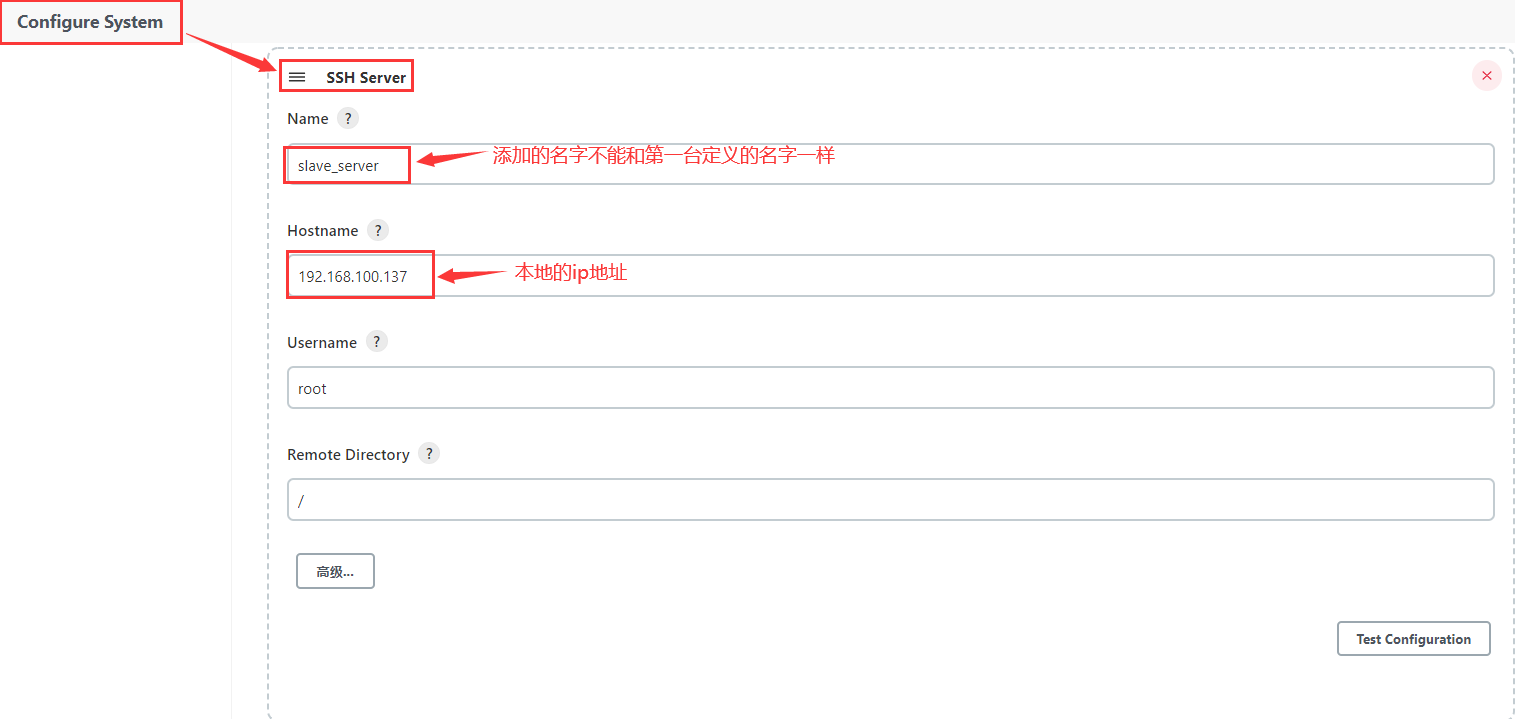
Modify Docker configuration trust Harbor private server address

Add parameter checkbox: deploy server





After the parameter configuration is completed, view the build interface
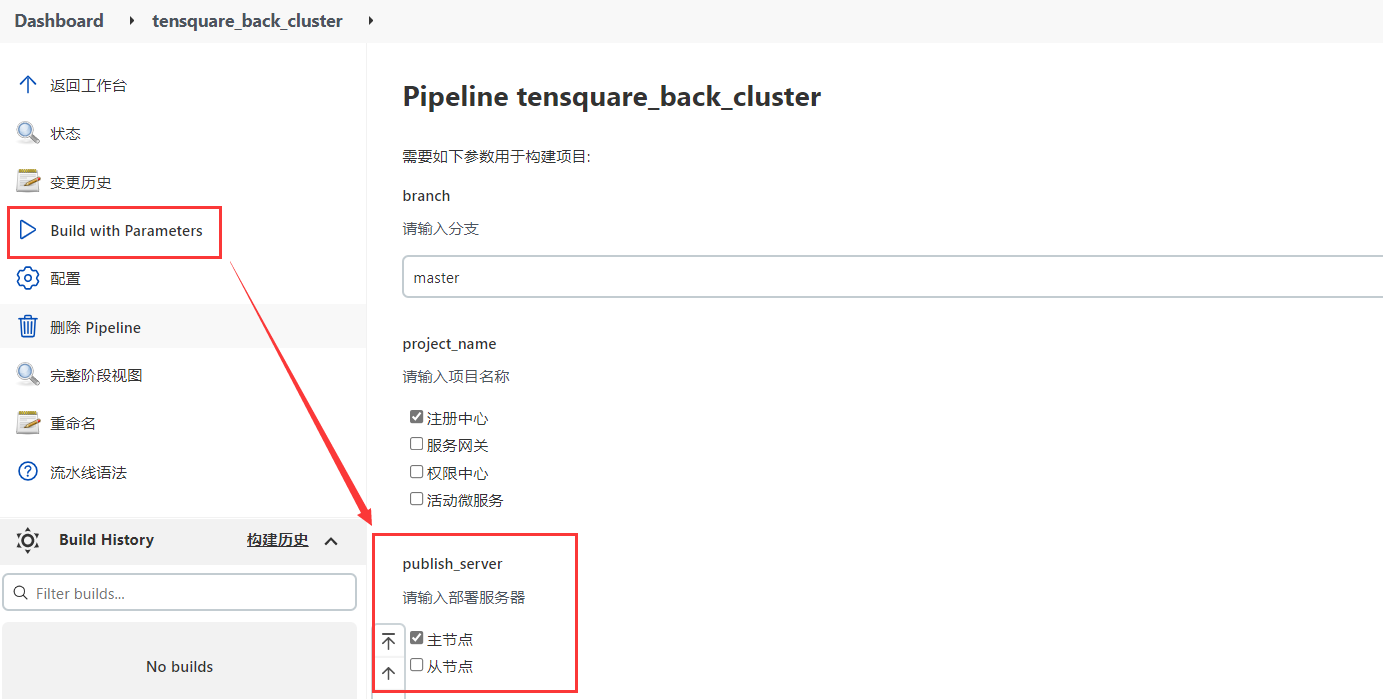
Modify Jenkins "le build script
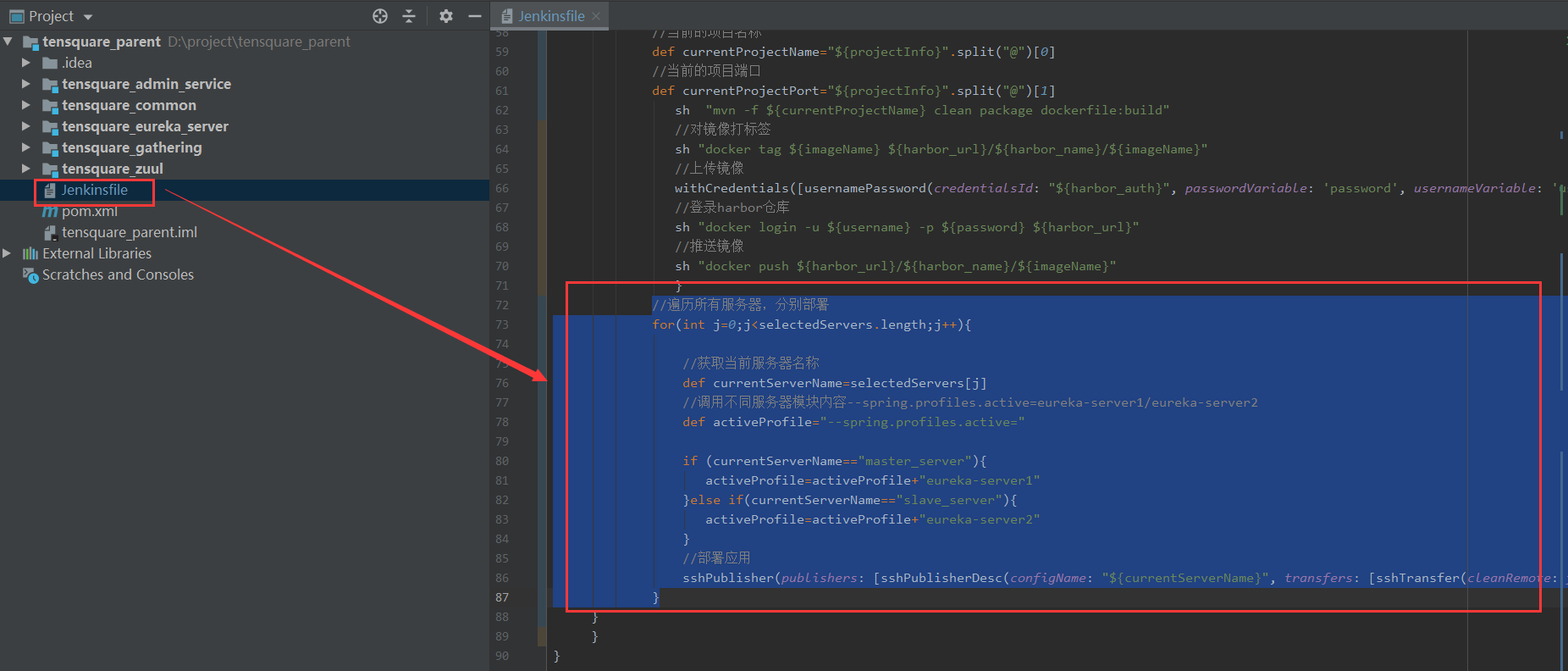
//Define git credentials
def git_auth="a5118464-372d-4269-a19d-2003b8911594"
//Define the URL of git
def git_url="git@192.168.100.135:kgc/tensquare_back.git"
//Define mirror label
def tag="latest"
//Define the url address of harbor
def harbor_url="192.168.100.129:85"
//Define image warehouse name
def harbor_name="tensquare"
//Define harbor voucher
def harbor_auth="483d5448-fcc4-44c5-8b5d-0740caa4c2ea"
node {
//Gets the name of the currently selected item
def selectedProjectNames="${project_name}".split(",")
//Gets the currently selected server
def selectedServers="${publish_server}".split(",")
stage('pull code') {
checkout([$class: 'GitSCM', branches: [[name: "*/${branch}"]], extensions: [], userRemoteConfigs: [[credentialsId: "${git_auth}", url: "${git_url}"]]])
}
stage('check code') {
//Cycle check
for (int i=0;i<selectedProjectNames.length;i++){
//Project information tensquare_eureka_server@10086
def projectInfo=selectedProjectNames[i]
//Current project name
def currentProjectName="${projectInfo}".split("@")[0]
//Current project port
def currentProjectPort="${projectInfo}".split("@")[1]
//Define the SonarQubeScanner tool
def scannerHome = tool 'sonar-scanner'
//Reference SonarQube system environment
withSonarQubeEnv('sonarqube') {
sh """
cd ${currentProjectName}
${scannerHome}/bin/sonar-scanner
"""
}
}
}
//Compile, package and make image
stage('make package images') {
sh "mvn -f tensquare_common clean install"
}
//Compiling and packaging microservices
stage('make server') {
for(int i=0;i<selectedProjectNames.length;i++){
//Project information tensquare_eureka_server@10086
def projectInfo=selectedProjectNames[i]
//Current project name
def currentProjectName="${projectInfo}".split("@")[0]
//Current project port
def currentProjectPort="${projectInfo}".split("@")[1]
sh "mvn -f ${currentProjectName} clean package dockerfile:build"
//Define image name
def imageName="${currentProjectName}:${tag}"
//Define image labeling
sh "docker tag ${imageName} ${harbor_url}/${harbor_name}/${imageName}"
//Upload image
withCredentials([usernamePassword(credentialsId: "${harbor_auth}", passwordVariable: 'password', usernameVariable: 'username')]) {
//Log in to harbor warehouse
sh "docker login -u ${username} -p ${password} ${harbor_url}"
//Push image
sh "docker push ${harbor_url}/${harbor_name}/${imageName}"
sh "echo Image upload succeeded"
}
//Traverse all servers and deploy them separately
for (int j=0;j<selectedServers.length;j++){
//Get the current server name
def currentServerName=selectedServers[j]
//Call the contents of different server modules -- spring profiles. active=eureka-server1/eureka-server2
def activeProfile="--spring.profiles.active="
//Call different server configuration information according to different server names
if (currentServerName=="master_server"){
activeProfile=activeProfile+"eureka-server1"
}else if (currentServerName=="slave_server"){
activeProfile=activeProfile+"eureka-server2"
}
//Business deployment
sshPublisher(publishers: [sshPublisherDesc(configName: "${currentServerName}", transfers: [sshTransfer(cleanRemote: false, excludes: '', execCommand: "/opt/jenkins_shell/deployCluster.sh ${harbor_url} ${harbor_name} ${currentProjectName} ${tag} ${currentProjectPort} ${activeProfile}", execTimeout: 120000, flatten: false, makeEmptyDirs: false, noDefaultExcludes: false, patternSeparator: '[, ]+', remoteDirectory: '', remoteDirectorySDF: false, removePrefix: '', sourceFiles: '')], usePromotionTimestamp: false, useWorkspaceInPromotion: false, verbose: false)])
}
}
}
}Push upload gitlab
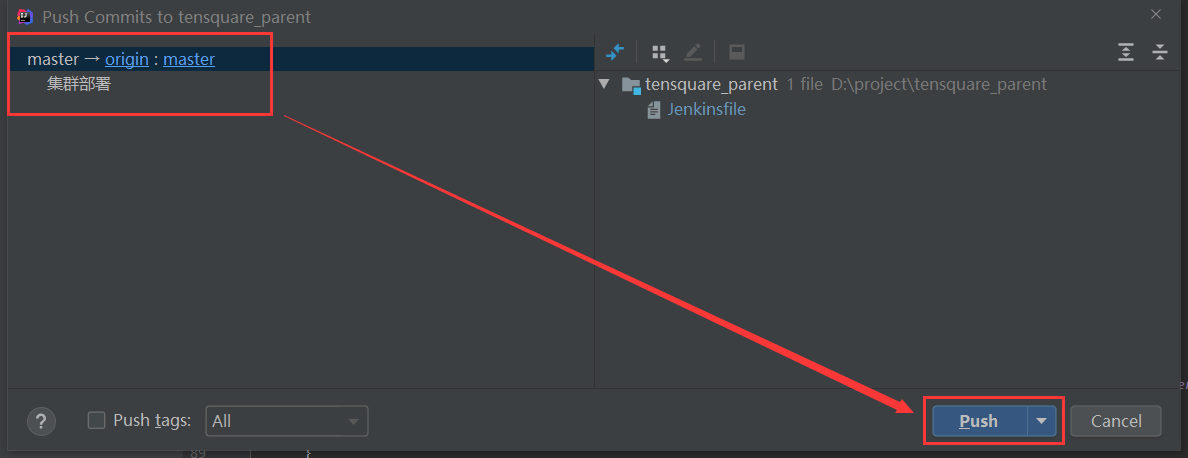
Write deploycluster SH deployment script and put it into two production servers
According to the deployed script path, click / opt/jenkins_shell/deployCluster.sh (give permission to execute)
#! /bin/sh
#Receive external parameters
harbor_url=$1
harbor_project_name=$2
project_name=$3
tag=$4
port=$5
profile=$6
imageName=$harbor_url/$harbor_project_name/$project_name:$tag
echo "$imageName"
#Query whether the container exists, and delete it if it exists
containerId=`docker ps -a | grep -w ${project_name}:${tag} | awk '{print $1}'`
if [ "$containerId" != "" ] ; then
#Stop the container
docker stop $containerId
#Delete container
docker rm $containerId
echo "Successfully deleted container"
fi
#Query whether the image exists, and delete it if it exists
imageId=`docker images | grep -w $project_name | awk '{print $3}'`
if [ "$imageId" != "" ] ; then
#delete mirror
docker rmi -f $imageId
echo "Mirror deleted successfully"
fi
# Log in to Harbor
docker login -u zch -p Zch12345 $harbor_url
# Download Image
docker pull $imageName
# Start container
docker run -di -p $port:$port $imageName $profile
echo "Container started successfully"Choose to build the registration center eureka with master and slave nodes
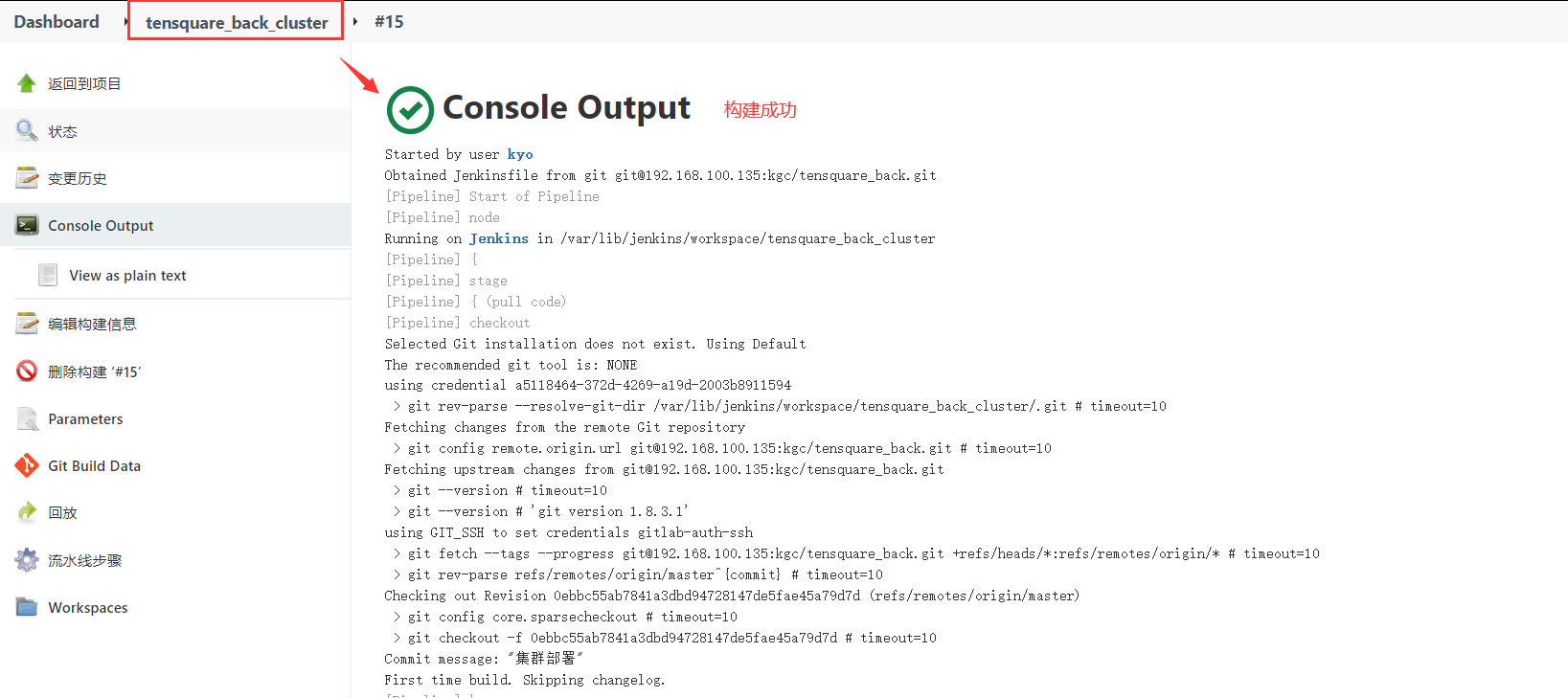
Browser view effect
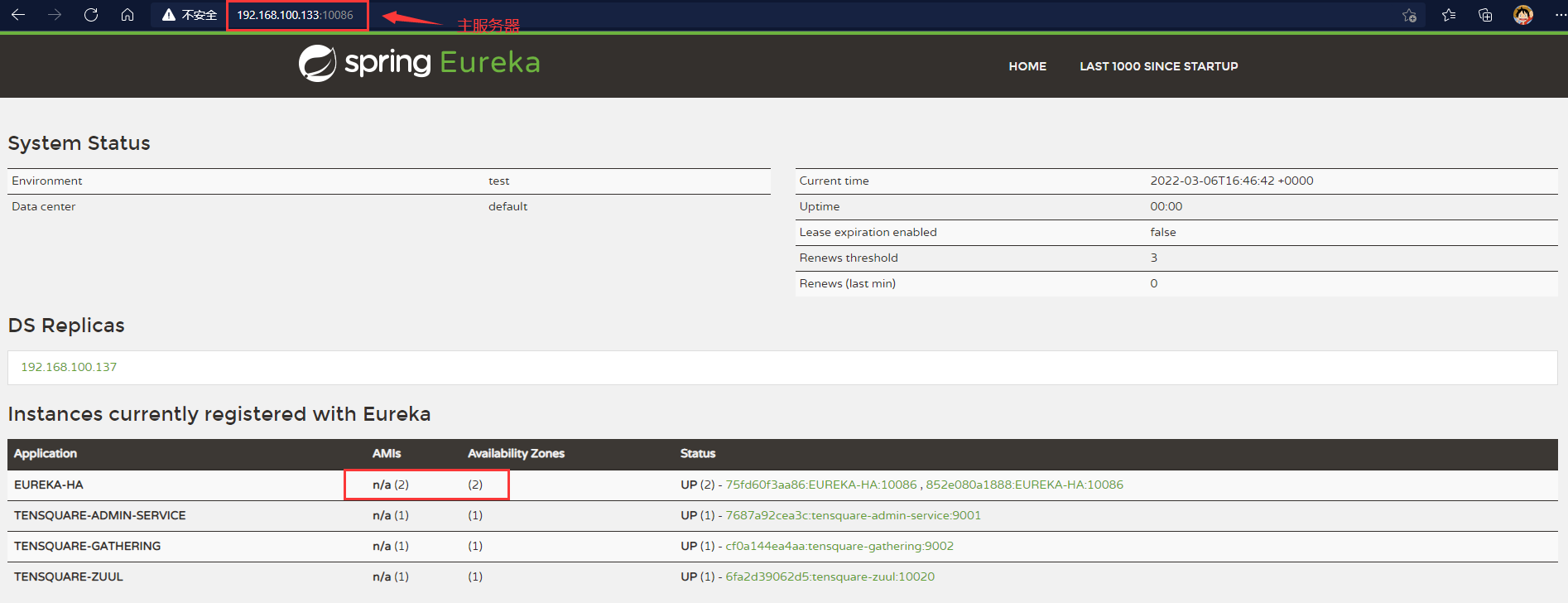
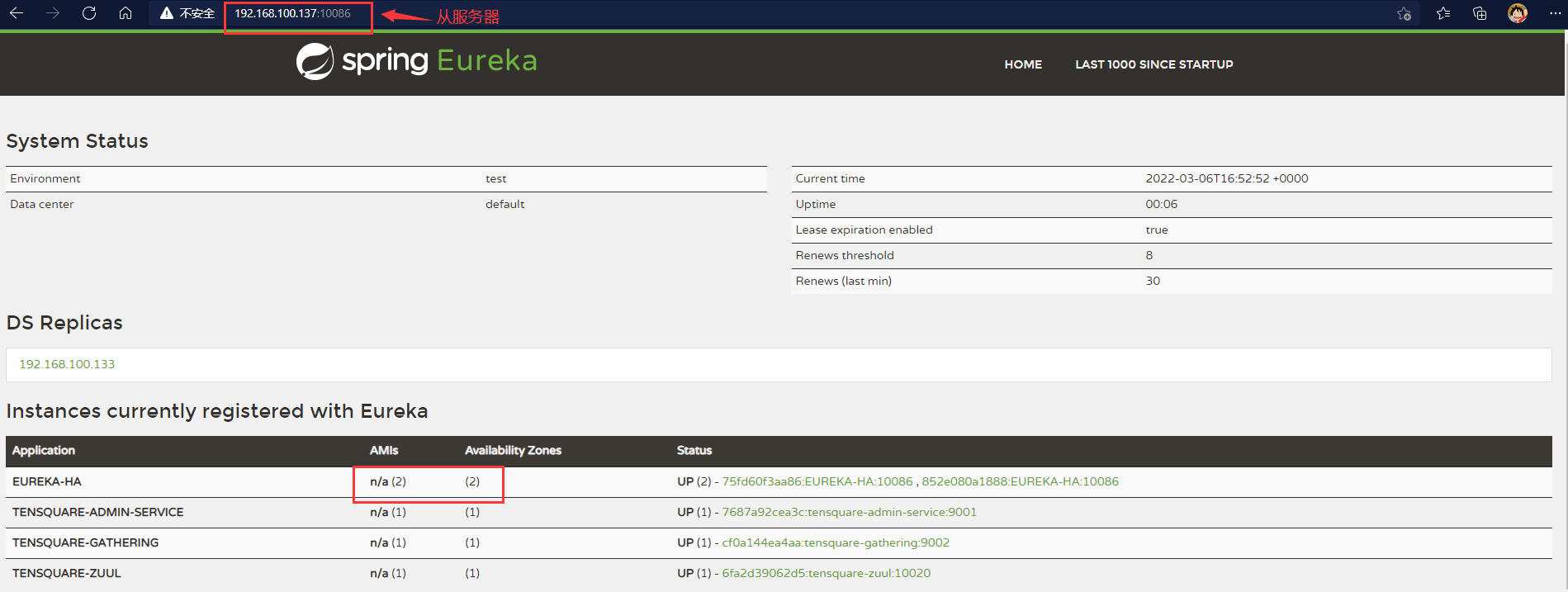
Finally, build the rest
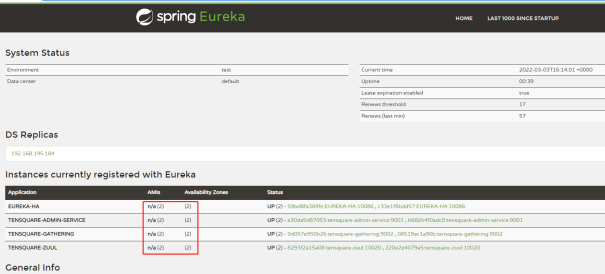
4.Nginx+Zuul cluster realizes high availability gateway

Install nginx on the second production server
After installation, set the configuration environment as the reverse proxy
[root@docker2 ~]# vim /etc/nginx/nginx.conf
server {
listen 85; #To prevent port conflict, change the port
listen [::]:85;
server_name _;
root /usr/share/nginx/html;
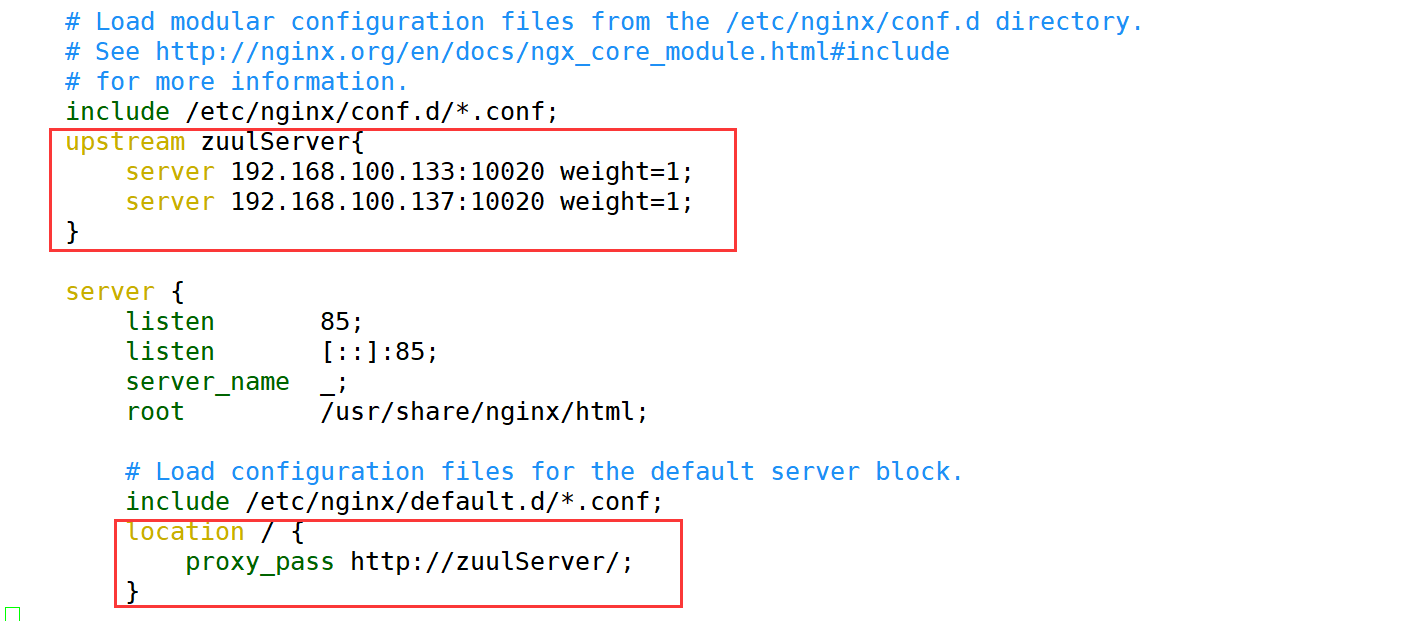
Restart Nginx: systemctl restart nginx
Modify the access address of the front-end Nginx

After the modification is completed, submit it to the front end with a little turtle
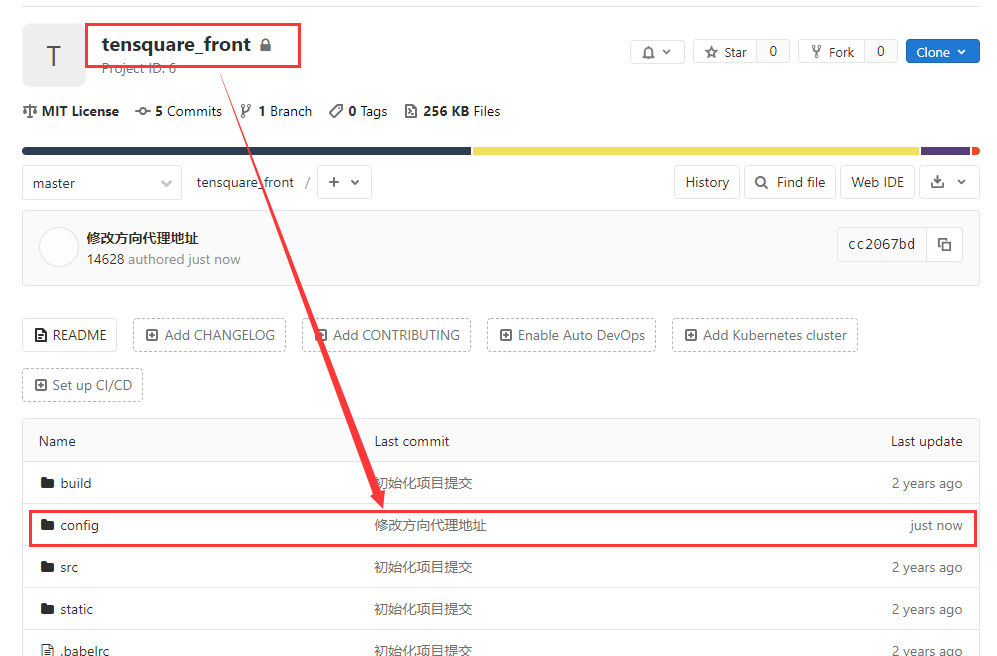
Build front end projects
